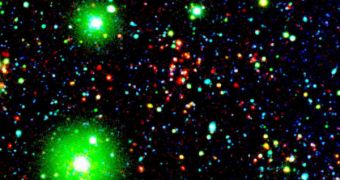Over the past few years, more and more experts have begun wondering whether the Big Bang model is indeed the most efficient one at explaining how the Universe came to be. Data are beginning to pile up showing evidence to contrary, and increasing numbers of astronomers are starting to listen.
This theory holds that the entire Cosmos, featuring all the matter and energy it contains within, developed from a single point of zero volume, but of infinite mass and energy (a singularity), some 13.75 billion years ago.
Leading cosmologists are beginning to argue that this is a rather simplistic look on things. They are saying that the scientific community will look back on the Big Bang a few years from now, and will laugh at the thought that its members ever believed in the theory.
Some of the experts arguing for a reconsideration of the origins of the Universe include California Institute of Technology (Caltech) expert Sean Carroll and Cambridge University scientist Neil Turok.
One of the main arguments this group has is also shared by experts supporting the Big Bang, and namely the redshift of galaxy. In short, this phenomenon affects the light of distant stars, changing its wavelengths in relation to the traveled distance.
For example, if we look at a galaxy located more than 10 billion light-years away from Earth, the ultraviolet light we see is in fact infrared light emitted by that galaxy. Over the tremendous distance is traveled, the wavelengths are shifted up the electromagnetic spectrum.
Big Bang supporters say this proves the event existed, whereas detractors argue that there may be other causes for this phenomenon. A massive black hole could for example use its tremendous gravity to attract nearby stars faster towards their doom, while they would appear to be moving faster away.
And this brings us to another issue, that of universal expansion. This is an observable fact, and the current thinking is that dark energy is responsible for producing it. However, in the absence of a Big Bang, other plausible explanations can be found for its existence.
Another aspect that contradicts the theory is the large-scale structure of the Universe itself, Daily Galaxy reports. Whereas the model predicts a homogeneous distribution of matter throughout, observations have found massive clusters separated by cosmic voids.
There is currently no way of explaining that with reference to the Big Bang. Maybe with the launch of instruments such as the NASA James Webb Space Telescope (JWST), thing will become a lot clearer.

 14 DAY TRIAL //
14 DAY TRIAL //